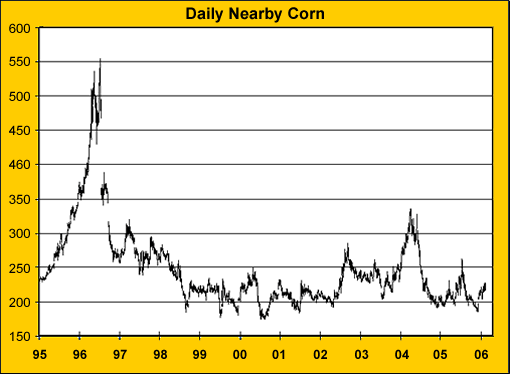| Home | About Us | Resources | Archive | Free Reports | Market Window |
The Easiest Money in FinanceBy
Sunday, March 5, 2006
The absolute best investments – in my opinion – are the ones you pick out of the trashcan. It’s the easiest money in finance. Take lead as an example. Lead is abundant, malleable, and resistant to corrosion. Man has used lead for 5,000 years. The Romans used lead to construct their famous water system. Over the course of the twentieth century, America learned lead could be extremely harmful to both humans and the environment. They discovered lead-based paint and gasoline could cause blindness, cancer, and death. Children were especially vulnerable. The government enacted legislation and banned lead from paint and gas. Lawyers filed suits against lead manufacturers. Demand for lead fell off a cliff. So did its price. Lead prices fell from $1.40 per pound in the late-‘70s to around 20 cents per pound by 2003. Lead was in the trashcan. It wasn’t just an unpopular material... it was actually killing people. At this point, we should have bought as much of it as we could. Here’s why... Because lead production poisons those who live nearby, no one had invested in the lead industry for years, and no new mines or smelters were built. According to the Lead Development Association, world lead mine production has gradually dwindled from about 3.75 million tons in the late 1970s to about 2.8 million tons in 2003. But sooner or later, someone was going to find new uses for cheap lead. That’s exactly what happened. Lead is an essential component of the lead-acid battery. As demand for new vehicles increased all around the world, so did demand for lead. Lead is also used in new TVs and computer monitors to protect users from radiation. Between Jan 2003 and Jan 2006, the lead price tripled.Anyone brave enough to buy lead when it was in the trashcan would have made an easy 200% profit. As I said, I consider these counter-cyclical “hated” investments to be the easiest money in finance. As an asset becomes hated, it usually becomes dirt-cheap. The problem now is, after five years of incredible liquidity creation all around the world, these contrarian opportunities are really hard to find. The grain market is one exception. It’s about the only asset class I can think of that hasn’t doubled or tripled in the last few years. More efficient farming methods, government subsidies, and large crops around the globe have all helped keep grain prices low for a good long time. I think there are good buying opportunities in soybeans, wheat and oats right now... but corn is my favorite ‘trashcan’ investment. With corn futures falling from $5.58 in July 1996 to a low of $1.79 last year, corn is in a bear market.
The low prices are having their usual impact. On the demand side, new applications for corn are emerging. According toThe Hightower Report, low prices are building a “tremendous demand base” in the corn market. The corn market has shifted “from being a food and feed market to a feed, food, energy, plastics and sweetener market.” On the supply side, low prices have pushed farmers out of the corn business and into other crops. The USDA projects corn-planted acreage down about 2% from last year. Hightower says “part of the anticipated decline in planted acreage has already been seen in the form of an increase in soft red winter wheat-planted acreage in the southeastern US corn belt.” There are other positive fundamental factors to consider... like the new popularity of corn-made ethanol, the adverse weather conditions that La Nina may cause and the impact of higher fertilizer prices on crop yields. But for me, these reasons are less important. The real story is that we’re in a long bull market in commodities... corn has been in the trashcan for a long time. No one wants to buy it... yet the price is starting to move higher. Have you got the guts to make the easiest money in finance? Good Investing, Tom Dyson |
Recent Articles
|


